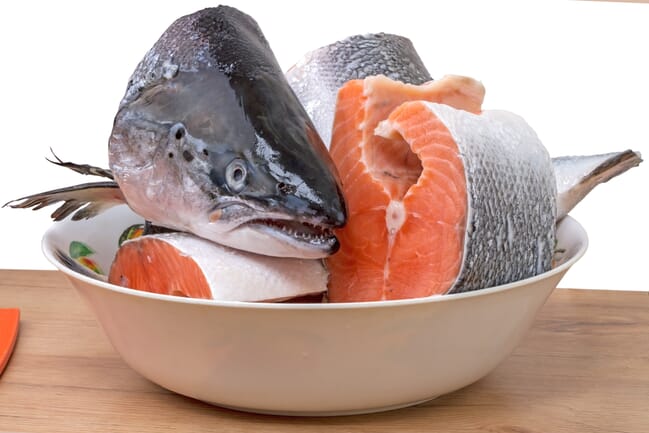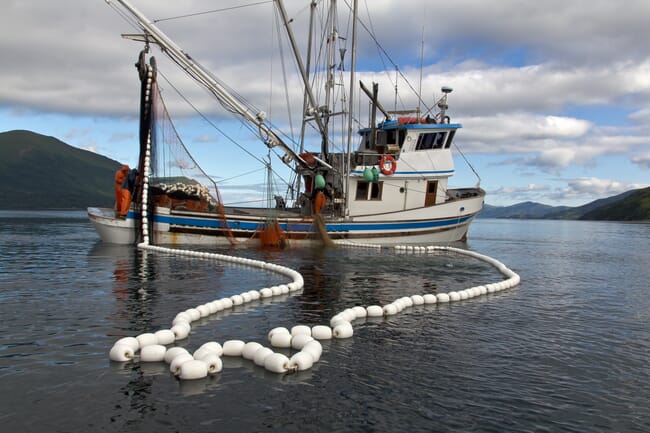Since 2011 China has been the number one customer for Alaska seafood with purchases nearing $800 million and comprising 54 percent of all Alaska exports to China. In Chinese food culture, fish symbolizes abundance and prosperity, which plays into a growing middle class that now earns the equivalent of about US $25,000 a year. That gives buyers significant disposable income to spend on more high-end foods, such as salmon. Add in increasing public concerns about food safety and pollution, and it means Alaska is well poised to send even more salmon to China.
A photo-filled Alaska Sea Grant report – called Consumer Preference and Market Potential for Alaska Salmon in China – gives a glimpse of that potential in a country with 1.4 billion people. Researchers from The University of Alaska Fairbanks and Purdue spent over three months surveying more than 1,000 urban supermarket shoppers in Beijing, Shanghai and Guangzhou to get their results.
Here’s a sampler:
- While nearly 40 percent of Chinese consumers said they eat seafood at least once a week, only about nine percent eat salmon that often, and seven percent have never eaten salmon. The most popular fish consumed by Chinese is carp.
- Over 66 percent considered seafood to be healthier than other foods, and more than 25 percent preferred wild-caught seafood. Nearly the same number did not pay attention to or understand the difference between wild and farmed fish.
- Almost 40 percent of Chinese consumers said they eat salmon in restaurants and prefer it raw, as sashimi or sushi. Nearly 18 percent eat salmon in the same uncooked ways at home.

Chinese consumers also value parts of the fish that most Americans consider trash – with fish heads, tails and bones used for various soups and stews. Supermarket prices showed salmon heads selling for $4.99 USD per pound, salmon skins at $2.46, and salmon bones at $5.10 per pound. The report said those low-value parts can add significant value to Alaska seafood exports to China.
“The survey responses show that consumers, if presented with more opportunities to purchase Alaska salmon, would favor the wild fish because of its health benefits, pristine source waters and sustainability,” said Quijie Zheng, a study co-author along with Holly Wang, Quentin Fong, and Yonggang Lu, all professors within Alaska’s university system.
The salmon potential has not been lost on Norway, the world’s top producer of farmed fish. The national fish news site Seafood.com reports that Norway plans to export 343 million pounds of farmed salmon to China by 2025, worth about 4.4 billion yuan, or US $646 million.
Pacific salmon catches at an all-time high
Alaska is the second largest salmon harvester in the North Pacific, topped only by Russia, and leads all other nations for releases of hatchery-reared fish.
That’s according to the North Pacific Anadromous Fish Commission (NPAFC) which revealed last month that salmon catches reported by its member countries – Canada, Japan, Korea, Russia, and the US – remain at all-time highs.
Since 1993, the Commission has tracked the abundance and origins of chum, coho, pink, sockeye, Chinook, cherry salmon and steelhead trout in the North Pacific, Bering Sea and the Sea of Okhotsk. Salmon abundance is based on the aggregate commercial catches of the five nations, which in 2016 totaled nearly 440 million fish, just slightly below previous years.
Russia ranked #1 for total salmon catches at 51 percent (967 million pounds), US fleets took 33 percent at 617 million pounds – and all but 19 million pounds of the US catch came from Alaska. That was followed by Japan at 13 percent (245m pounds), three percent from Canada (47m pounds) and less than one percent of the North Pacific salmon catch was taken by Korea.
Pink salmon made up 41 percent of the total catch by weight, with Russia hauling in 75 percent of the pink pack. That was followed by chums at 33 percent, sockeyes at 21 percent, coho at three percent and Chinook salmon made up one percent of the North Pacific catch.
Hatchery releases of salmon from NPAFC member countries topped 5 billion fish in 2016 (38 percent of the total salmon catch), similar to numbers over the last three decades. The US released 37 percent of the hatchery fish (1,898 million fish), followed by Japan at 37 percent (967 million), Russia at 19 percent (282 million) and Canada at six percent (22 million fish). Sixty-five percent of the hatchery releases were chum salmon, followed by pinks at 24 percent. Chinook, sockeye and coho salmon releases were five percent or less.




